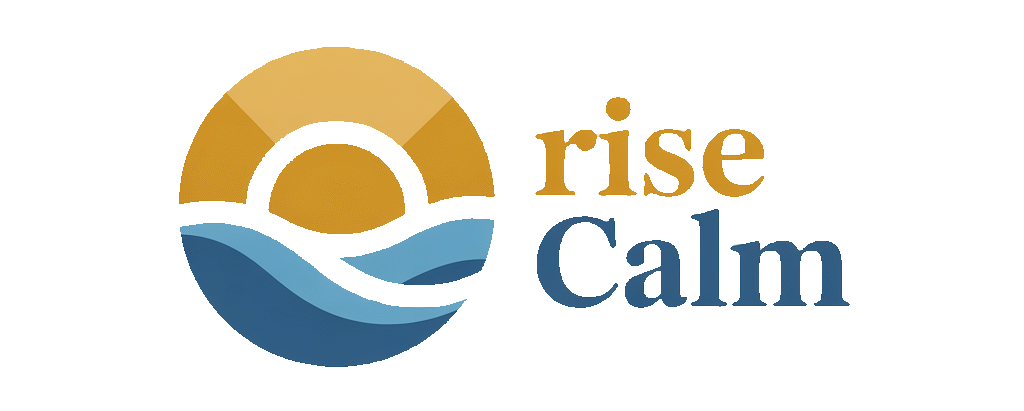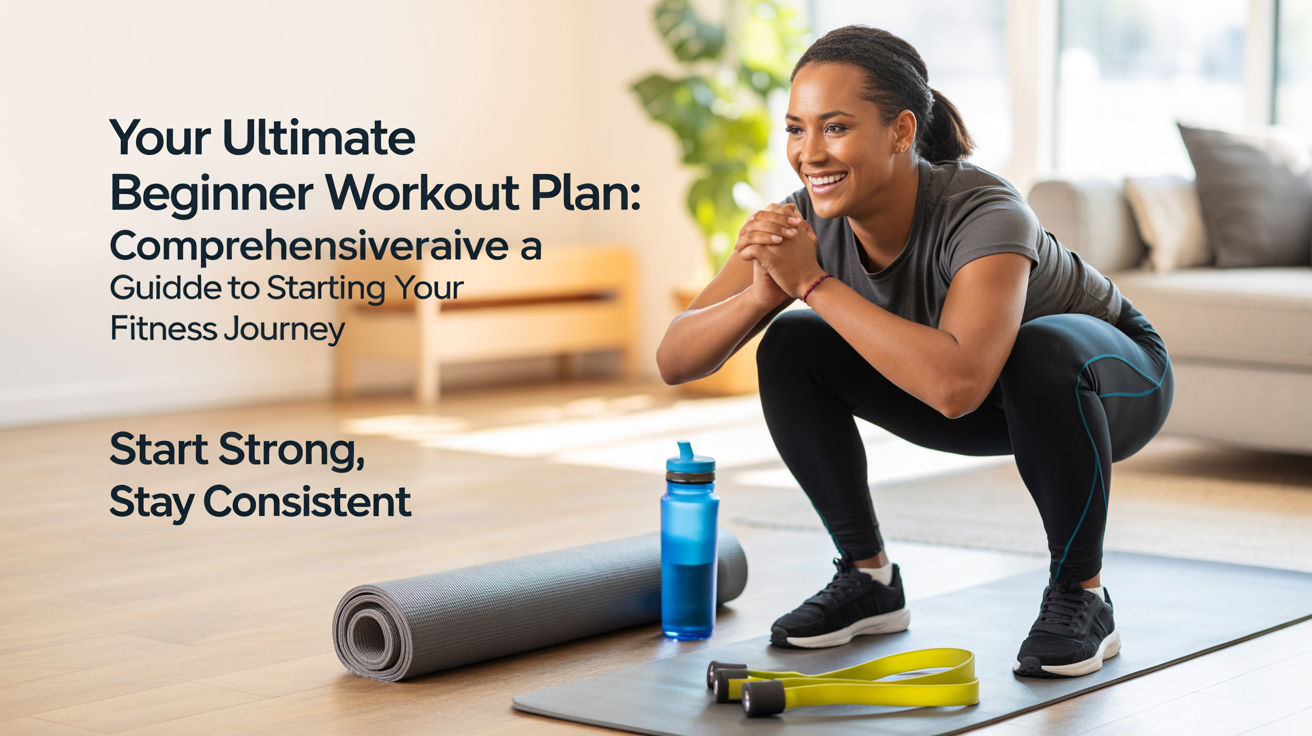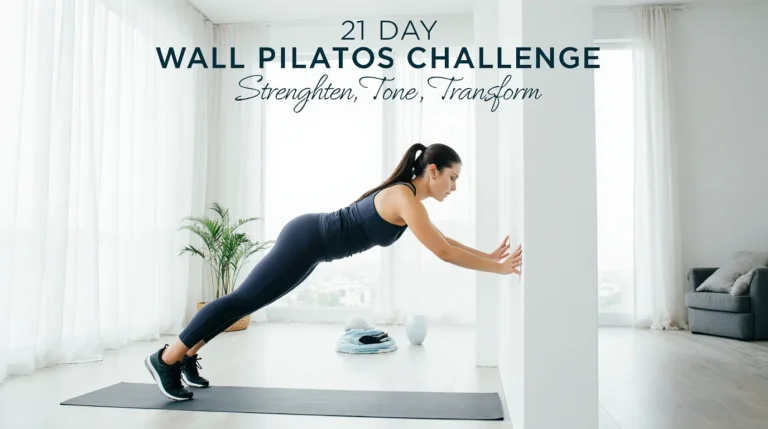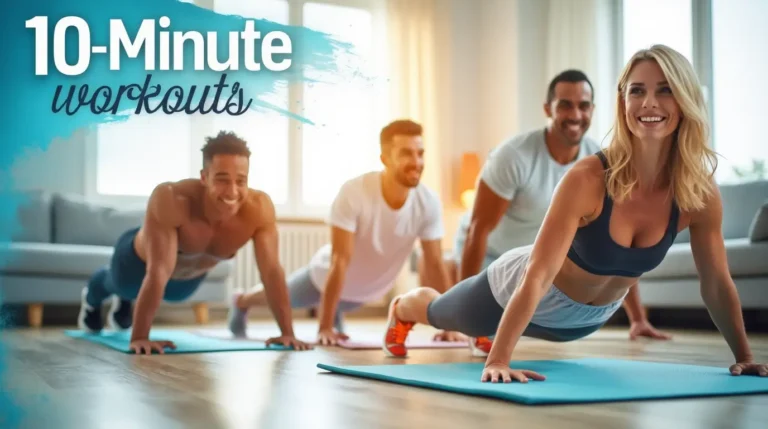Beginner Workout Plan: Your Unintimidating Guide to Full-Body Training, Progressive Overload, and Lasting Health
Feeling that familiar itch to finally get in shape, but immediately swamped by the sheer volume of “expert” advice, flashy routines, and conflicting information? You’re not just scratching your head; you’re echoing the sentiment of millions of aspiring fitness enthusiasts. The internet, while a treasure trove, can also be a bewildering maze when you’re seeking a beginner workout plan that’s genuinely effective, easy to follow, and doesn’t demand you possess the agility of a gymnast or the strength of a weightlifter from day one. Good news: embarking on a fitness journey doesn’t have to be a daunting expedition into the unknown.
This isn’t just another generic fitness article. This is your personal launchpad, a comprehensive guide designed to cut through the noise and provide a clear, actionable roadmap for anyone taking their very first steps into structured exercise. Whether your compass points towards building foundational strength, shedding some weight, boosting your overall health, or simply feeling more vibrant and capable in your daily life, this guide offers the blueprint you need. It’s built on simplicity, consistency, and intelligent progression, ensuring you start with confidence and, more importantly, stay consistent.
Unlike so many resources that assume a baseline of fitness knowledge or throw you straight into advanced techniques, this guide operates on the principle that true beginners deserve a tailored approach. We’re talking about individuals with little to no previous exercise experience, those who want to lay down a rock-solid foundation without getting injured or burnt out. We’ll demystify everything from the core principles of fitness to setting up your first beginner gym routine or crafting an effective beginner home workout, all delivered with straightforward, implementable advice at every turn.
Table of Contents
The single most crucial concept to internalize when kicking off any beginner workout plan is this: consistency absolutely trumps perfection. You don’t need to execute every exercise flawlessly or commit to an extreme regimen right out of the gate to see meaningful results. In fact, such high-pressure, all-or-nothing approaches are precisely what lead newcomers down the path of burnout, injury, and eventual abandonment. Instead, this guide champions the creation of sustainable habits, emphasizing proper form over heavy loads, and advocating for gradual progression. These are the unsung heroes of long-term fitness success.
Whether you’re planning your very first time gym workout or looking to establish a simple, effective routine from the comfort of your living room, this comprehensive resource is designed to empower you. Let’s dive into the core principles of crafting an effective, enduring beginner workout routine for whatever your goal may be – whether it’s weight loss, increased strength, or simply a greater sense of overall well-being. The best time to start building a stronger, healthier you is always today.
Decoding Fitness: The Beginner’s Playbook

Stepping into the world of fitness can feel like learning a new language. But at its heart, physical improvement adheres to straightforward scientific principles. Grasping these makes the entire process far less mysterious and significantly more manageable. For anyone starting a fitness journey, the most fundamental concept to absorb is progressive overload. This isn’t some complex jargon; it simply means gradually increasing the demands you place on your body over time. When you challenge your muscles, your cardiovascular system, or your flexibility beyond their current comfort zones (safely, of course), your body has no choice but to adapt. It gets stronger, more enduring, and more flexible to better handle that stress next time. For a beginner, this translates to adding a little more weight, performing a few more repetitions, or extending your workout duration as you get fitter. It’s a continuous, gentle push, not a sudden shove.
A truly holistic beginner exercise program isn’t just about lifting weights or running. It thoughtfully weaves together several interconnected components of fitness. Strength training is your foundation, involving exercises that pit your muscles against resistance. This builds muscle size (don’t worry, you won’t get “bulky” overnight!), increases raw strength, and importantly, improves bone density and boosts your metabolism. Then there’s cardiovascular fitness, the efficiency of your heart and lungs in delivering oxygen to your working muscles. Activities like brisk walking, light jogging, cycling, or swimming are your tools here. Flexibility refers to the range of motion in your joints and your muscles’ ability to stretch, contributing to better posture and reduced injury risk. Mobility takes flexibility a step further, integrating strength through a full range of motion, enabling more functional, everyday movements. Finally, balance and coordination, often overlooked, are crucial for maintaining stability and control during various activities. A well-rounded beginner plan touches on all these areas, even if subtly at first.
Managing your expectations is a cornerstone of long-term adherence to any beginner fitness plan. Instant gratification is rarely fitness’s strong suit. Physical changes follow predictable timelines: you might feel stronger or more coordinated within just 2-3 weeks as your nervous system adapts. Cardiovascular improvements, like less breathlessness during daily activities, often become noticeable within 3-4 weeks. But visible changes in body composition – that’s generally a 6-8 week commitment, requiring consistent exercise paired with sensible nutrition. Understanding these timelines protects you from discouragement and the temptation to quit prematurely. Remember, progress isn’t a straight line; expect plateaus where changes seem to slow, followed by periods of rapid improvement. This ebb and flow is a natural part of everyone’s journey.
For the novice, consistency unequivocally outweighs intensity. A moderate-intensity workout performed regularly – say, 3-4 times a week – will yield vastly superior results compared to sporadic, all-out efforts followed by days of agonizing soreness and recovery. This principle is paramount for beginners because excessive intensity often leads to extreme muscle soreness, a higher risk of injury, and, crucially, a dramatic drop in motivation to continue. Your initial focus should be on establishing the habit of regular exercise. Even if individual sessions feel “too easy” initially, prioritize showing up. Research suggests that habit formation typically solidifies after 6-8 weeks of consistent practice. Use a simple calendar or a fitness app to track your workouts; seeing those completed sessions stack up provides powerful visual motivation.
Understanding how your body actually adapts can be incredibly motivating. When you engage in strength training, you create tiny, microscopic tears in your muscle fibers. During the recovery period that follows, your body repairs and reinforces these fibers, making them stronger and potentially larger. This process, known as muscle protein synthesis, requires adequate protein intake and sufficient rest. Cardiovascular improvements come from your heart muscle strengthening, an increase in blood volume, and your body developing more mitochondria (cellular powerhouses) and capillaries (tiny blood vessels) to more efficiently deliver oxygen. Flexibility improves as consistent stretching gradually lengthens and re-organizes connective tissues. All these adaptations hinge on both the stimulus of appropriate exercise and adequate recovery. It’s a partnership where both effort and rest are non-negotiable.
Beyond the physical, the psychological aspects of a fitness journey are just as critical, particularly for beginners. Behavioral psychology reveals that intrinsic motivation – exercising because you genuinely enjoy it or how it makes you feel – is a far more sustainable driver than extrinsic motivation (like exercising solely for appearance). As you begin, tune into what aspects of exercise genuinely resonate with you: the feeling of getting stronger, the mental clarity post-workout, or the satisfaction of mastering a new movement. Cultivating these internal rewards builds a more resilient approach to fitness, one that can endure the inevitable challenges and fluctuations in external results. Furthermore, the concept of self-efficacy – your belief in your ability to succeed – highlights why starting with achievable workouts that build confidence is far more effective than diving into overly challenging routines that might leave you feeling inadequate.
Gearing Up: Smart Choices for Your Beginner Workouts
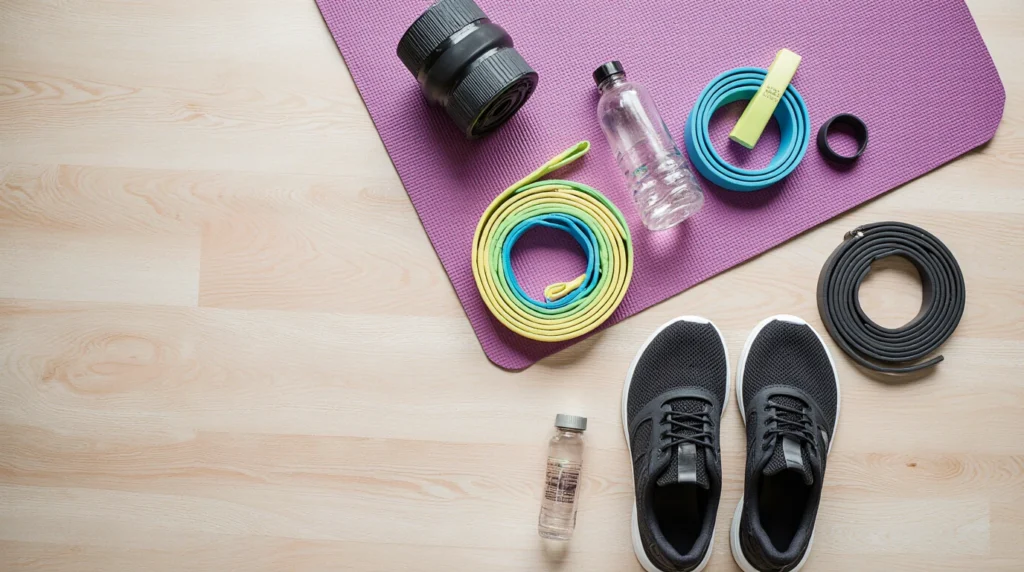
Starting a beginner workout plan does not necessitate converting a spare room into a high-tech gym or emptying your wallet on every shiny piece of equipment. For beginners, a minimalist mindset isn’t just budget-friendly; it actively prevents the common trap of buying expensive gear that gathers dust after the initial burst of enthusiasm fades.
The absolute essentials for most beginners boil down to a handful of items. A high-quality pair of athletic shoes is paramount, offering proper support for your foot type and chosen activities (e.g., running shoes for running, cross-trainers for general workouts). Comfortable, moisture-wicking clothing that allows for full, uninhibited movement is also key – nobody wants chafing or restrictive fabric hindering their efforts. And, of course, a water bottle is your constant companion to ensure you stay properly hydrated.
Depending on where you plan to train, a yoga or exercise mat offers cushioning and grip for floor exercises and stretching, a worthwhile small investment. For those embracing beginner strength training, a versatile set of resistance bands is a game-changer. These are incredibly space-efficient, offer scalable resistance, and can effectively target nearly every major muscle group. While entirely optional, a basic fitness tracker or even a smartphone app can provide useful data like steps taken or heart rate, offering a gentle nudge of accountability.
If you’re setting up a beginner home workout space on a tight budget, you’ll be pleasantly surprised by how much you can achieve. As mentioned, resistance bands are incredibly effective and affordable, often costing just $15-30 for a multi-level set. Adjustable dumbbells, while a larger initial investment ($100-300), offer immense versatility, replacing numerous fixed-weight dumbbells in a compact footprint. A stability ball ($20-30) is a multi-functional tool, acting as a bench alternative, a core training aid, and a balance improver. A doorway pull-up bar ($20-40) opens up critical upper-body pulling exercises that are otherwise challenging without equipment. For effective cardiovascular training in a small space, a simple jump rope ($10-20) is hard to beat – it’s incredibly efficient and portable. Collectively, these budget-friendly items can create a surprisingly comprehensive home gym environment for under $200, making effective fitness genuinely accessible.
When the time comes to transition to a beginner gym routine, understanding which equipment to focus on can prevent overwhelm. Free weights – dumbbells, barbells, kettlebells – generally offer superior, more comprehensive strength development compared to machines because they demand greater stabilization and coordination. However, certain machines (like a leg press, chest press, or seated row machine) are excellent starting points for beginners. They provide guided movement patterns, reducing injury risk while you learn proper form and build foundational strength. Cable machines are exceptionally versatile, allowing you to apply resistance from various angles. For cardio, experiment with different options like the treadmill, elliptical, stationary bike, or rowing machine. The “best” cardio equipment is always the one you’ll enjoy and use consistently. Remember, you don’t need to use every piece of equipment in the gym; a focused approach using a select few effectively will yield far better results than haphazardly sampling everything.
It’s wise to hold off on certain equipment until you’ve established consistent training habits and developed fundamental movement competency. This includes highly specialized gear like Olympic weightlifting platforms, plyometric boxes for intense jumping, heavy resistance chains, or complex cable attachments. For a beginner, these offer minimal additional benefit and carry a higher risk of improper use and injury. Similarly, expensive cardio machines laden with advanced features are rarely a justified investment when you’re just starting out. Advanced wearable tech beyond a basic fitness tracker – think muscle oxygen sensors or detailed recovery trackers – often provides data that beginners aren’t yet equipped to interpret or effectively act upon. The fitness industry is adept at marketing “revolutionary” equipment, but the truth is that simple, fundamental tools, used consistently with progressive overload, will provide everything you need for significant progress in your first 6-12 months of any beginner workout plan.
Beyond the hard equipment, your workout attire deserves attention. Your shoes, as mentioned, are critical. Running shoes are for forward motion, cross-training shoes offer lateral stability, and lifting shoes provide a stable base for heavy lifts. Ensure they fit well, with room in the toes and no heel slippage. For clothing, prioritize moisture-wicking synthetic fabrics or performance wool blends, which manage sweat much better than cotton, preventing chafing and discomfort. Clothing should allow a full range of motion without being overly baggy or restrictive. For women, a supportive sports bra is essential, matched to the impact level of your activity. While not strictly necessary for beginners, some find compression garments comfortable and supportive.
Finally, don’t underestimate the power of digital resources. Free apps and websites abound, offering exercise demonstrations that are invaluable for ensuring proper form when a coach isn’t present. Interval timing apps help structure work-rest periods, especially useful for circuit training. Workout tracking applications allow you to log your performance, observe your progress, and stay motivated. Music streaming services with curated workout playlists can significantly boost your performance and enjoyment – studies consistently show that syncing movement to music can increase endurance and power while reducing perceived exertion. For those who thrive on group energy but prefer home workouts, numerous free and subscription-based online fitness platforms offer guided sessions across various disciplines. These digital tools beautifully complement physical equipment by providing structure, education, and unwavering motivation.
Crafting Your Rhythm: The Ideal Beginner Workout Schedule
Establishing the right training frequency is one of the most pivotal decisions when designing your beginner workout schedule. Extensive research and practical experience consistently point to 3-4 training sessions per week as the sweet spot for most newcomers. This frequency strikes an optimal balance: it’s enough to deliver the necessary stimulus for adaptation, yet it provides ample recovery time between sessions, which is crucial for bodies unaccustomed to regular exercise.
A common pitfall for enthusiastic beginners is training too often – thinking more is always better. This often means 5+ days a week, which quickly leads to accumulated fatigue, persistent soreness, and a heightened risk of overuse injuries long before the body has built the resilience to handle such volume. Conversely, training less than twice a week typically provides insufficient stimulus for any meaningful, lasting progress. Within that recommended 3-4 session framework, beginners should ideally focus on full-body training during each session, rather than the body-part splits favored by more advanced trainees. This approach maximizes training efficiency, allows for frequent practice of fundamental movements (essential for skill acquisition), and distributes overall fatigue more evenly.
The magic of physical improvement truly happens during recovery, not just during the workout itself. This is a crucial distinction many beginners miss. The training session provides the trigger, but the actual adaptations – increased strength, improved cardiovascular capacity, enhanced flexibility – unfold during the rest period that follows. For a 3-day training schedule, non-consecutive days work best, such as Monday-Wednesday-Friday. This ensures a full day of recovery between each training stimulus. For a 4-day schedule, a Monday-Tuesday-Thursday-Friday approach is highly effective. This creates a mini-block of two consecutive training days, followed by a dedicated recovery day, then another block and an extended weekend for recuperation. Crucially, “recovery day” doesn’t always mean complete inactivity. Light activity like walking, gentle cycling, or basic mobility work can actually enhance recovery by promoting blood flow to fatigued muscles while reinforcing the daily habit of movement.
Here are some sample weekly schedules you can adapt based on your personal availability and preferences, all while adhering to effective training principles:
- The Time-Crunched 3-Day Approach:
- Monday: Full-Body Strength Training (30-40 minutes, focus on compound movements)
- Wednesday: Combined Strength & Cardio Circuit (30-40 minutes, e.g., bodyweight exercises followed by a short cardio burst)
- Friday: Full-Body Strength Training (30-40 minutes, consider different exercise variations than Monday to add variety)
- The Moderate 4-Day Approach:
- Monday: Full-Body Strength Emphasis (40-50 minutes, focusing on major muscle groups)
- Tuesday: Cardio and Core Emphasis (30-40 minutes, e.g., brisk walk/jog and a plank circuit)
- Thursday: Full-Body Strength (40-50 minutes, with a slightly different exercise selection or emphasis)
- Saturday: Flexibility, Mobility, and Light Cardio (30-40 minutes, focusing on stretching and gentle movement)
- The Comprehensive 4-Day (with slight split) Approach:
- Monday: Upper Body Strength Focus (45-60 minutes, with light lower body warm-up)
- Tuesday: Dedicated Cardio & Core Training (30-45 minutes, e.g., elliptical or row machine and advanced core work)
- Thursday: Lower Body Strength Focus (45-60 minutes, with light upper body warm-up)
- Saturday: Full-Body Circuit (45-60 minutes, combining strength and cardio elements for a challenging finish)
Each of these templates provides a robust training stimulus while being adaptable to different lifestyle demands.
The progression of your beginner workout schedule over the initial 8-12 weeks should be strategic and systematic, avoiding arbitrary jumps in volume or intensity.
- Weeks 1-2: The Foundation Phase. Your primary focus here is learning proper exercise technique. Use lighter weights (or just your bodyweight) and moderate volume. If you’re completely new to exercise, even starting with just 2-3 sessions per week is perfectly acceptable. Master the movements first.
- Weeks 3-4: Gradual Challenge. Keep your exercise selection largely the same, but begin to gradually increase the weights you lift or the repetitions you perform as movements become more familiar and initial soreness subsides. Aim for slightly more than last week.
- Weeks 5-6: Expanding & Building. If you’ve been consistently managing your current schedule, consider adding one additional training day. Also, introduce 1-2 new exercises per session to broaden your movement vocabulary and challenge your muscles in new ways.
- Weeks 7-8: Variation & Intensity. Start incorporating slightly more challenging variations of familiar exercises (e.g., moving from knee push-ups to incline push-ups, or from goblet squats to dumbbell squats if comfortable). Continue your gradual increases in weight or repetitions.
- Weeks 9-12: Introducing Complexity. At this point, your body will have built a solid foundation. You might introduce more advanced programming techniques like supersets (performing two exercises back-to-back without rest) or strategically manipulating rest periods to increase workout density.
This gradual, phased progression allows for both physiological and psychological adaptation, minimizing injury risk and maximizing your chances of long-term adherence.
Maintaining consistency with your workout plan for beginners demands both practical strategies and psychological fortitude to overcome common challenges. From a practical standpoint, scheduling your workouts at the same time each day (or on your chosen training days) is remarkably powerful. This leverages the science of habit formation, making exercise an automatic behavior rather than a constant battle of willpower. Preparing your workout clothes and equipment the night before (especially for morning workouts) eliminates common excuses and removes friction points.
Psychologically, the “ten-minute rule” is incredibly effective. On days when motivation feels non-existent, commit to doing just ten minutes of your planned workout. Tell yourself you can stop after that if you truly want to. More often than not, once you start moving, the initial resistance dissipates, and you’ll complete the entire session. Visually tracking your workouts – on a wall calendar, a fitness app, or a simple journal – provides satisfying evidence of your consistency and fosters a desire to maintain your “streak” of successful sessions.
Finally, adjusting your beginner workout schedule for inevitable life disruptions is an essential skill for long-term fitness success. Don’t view your training plan as an all-or-nothing proposition. Instead, adopt a tiered approach:
- Your “A Plan”: This is your ideal weekly schedule when everything is going perfectly.
- Your “B Plan”: This involves shortened but still effective versions of your regular workouts (e.g., 20-30 minutes instead of 45-60) for those busy periods when time is tight but exercise is still possible.
- Your “C Plan”: These are minimal maintenance sessions (even just 10-15 minutes of fundamental movements) for truly challenging times like travel, recovering from a minor illness, or unusual work demands.
This tiered flexibility prevents the common “I missed a day, so I’ll just give up entirely” mentality. Remember, consistent effort over time, even with imperfect adherence, dramatically outperforms sporadic perfect execution followed by complete abandonment. The most successful fitness journeys are characterized not by flawlessness, but by the ability to adapt and maintain the fundamental habit of regular movement despite life’s inevitable fluctuations.
Gym Newbie? Your Complete Beginner Gym Workout Plan
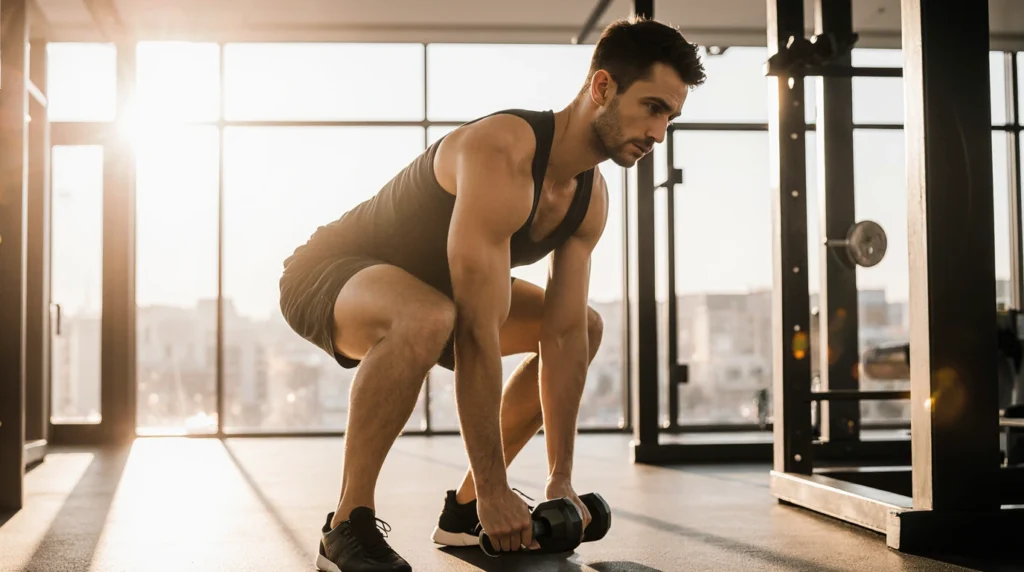
A intelligently designed beginner gym routine prioritizes full-body workouts. This approach helps you develop fundamental movement patterns while fostering balanced muscular development across your entire body. Unlike advanced training splits that isolate specific body parts on different days, full-body training for beginners offers distinct advantages: it maximizes the frequency with which each muscle group is trained (leading to faster skill development and strength gains), ensures more balanced fatigue distribution (preventing excessive soreness in any one area), and generally results in greater caloric expenditure per session, which is beneficial for body composition goals.
Here’s a sample full-body routine that serves as an excellent starting point for those new to the gym environment. This balanced selection targets all major movement patterns, providing comprehensive development in approximately 45-60 minutes:
- Goblet Squats: 3 sets of 10-12 repetitions (Focus on sitting back as if to a chair, keeping chest up and elbows inside knees.)
- Dumbbell Bench Press (on a flat bench or floor): 3 sets of 10-12 repetitions (Control the dumbbells, lower them slowly, and press straight up.)
- Seated Cable Rows: 3 sets of 10-12 repetitions (Pull the handle towards your lower abdomen, squeezing your shoulder blades together.)
- Dumbbell Shoulder Press (seated or standing): 3 sets of 10-12 repetitions (Press the dumbbells overhead, ensuring your core is braced.)
- Dumbbell Romanian Deadlifts (RDLs): 3 sets of 10-12 repetitions (Keep a slight bend in your knees, hinge at your hips, lowering the dumbbells along your shins, feeling a stretch in your hamstrings.)
- Plank: 3 sets, held for 20-30 seconds (Maintain a straight line from head to heels, bracing your core as if expecting a punch.)
Proper exercise selection for a beginner workout plan always balances effectiveness with safety. Focus on movements that offer maximum benefit while minimizing technical complexity and injury risk. Compound exercises – those that involve multiple joints and muscle groups working in concert (like squats, presses, rows) – should form the bedrock of your program. They build coordinated movement patterns, are highly efficient, and better mimic real-world physical demands compared to isolation exercises. Machine-based versions of compound movements (e.g., leg press, chest press machine, seated row machine) are excellent starting points for many beginners as they provide external stability and guide your movement path, allowing you to develop basic strength safely. As your coordination improves, gradually transition to free-weight variations (dumbbell squats, dumbbell bench press, dumbbell rows) which demand greater stability and enhance functional strength. Be respectful of highly technical exercises like barbell squats, conventional deadlifts, and Olympic lifting variations; these are incredibly effective but demand careful, slow progression and, ideally, instruction from a qualified coach to perform safely. Isolation exercises (like bicep curls or tricep extensions) can complement compound movements, but they should remain secondary in a beginner program.
Understanding appropriate sets, repetitions, and rest guidelines is key to optimizing your training stimulus. For your first time gym workout, 2-3 sets per exercise provide sufficient volume to stimulate adaptation without causing excessive fatigue or prolonging your session unnecessarily. A repetition range of 10-15 repetitions per set is ideal for beginners. This range promotes a balanced development of strength and muscular endurance, and crucially, allows you ample practice of the movement patterns. This moderate rep range also helps develop the “mind-muscle connection” – your conscious awareness of the muscles you’re working – which significantly enhances technique and effectiveness. Rest periods between sets should typically be 60-90 seconds. This allows sufficient recovery for maintaining performance while keeping the overall workout density high enough to deliver both strength and conditioning benefits. A good rule of thumb for weight selection: you should be able to complete the targeted repetitions with the final 2-3 reps feeling challenging but still achievable with good form. If you could easily do many more reps, the weight is too light; if you can’t complete the minimum reps with good form, the weight is too heavy.
Navigating gym environments as a beginner involves both practical considerations and awareness of gym etiquette, both of which can significantly influence your experience. Practically, for your first time gym workout, consider visiting during less crowded hours (often mid-morning or early afternoon on weekdays) to reduce any feelings of intimidation and improve equipment availability. Many gyms offer an orientation session with staff; take advantage of this to learn basic equipment operation and safety features before venturing out on your own. Having your workout plan prepared in advance, perhaps with a few alternative exercises noted in case equipment is busy, prevents aimless wandering and enhances confidence.
From an etiquette standpoint, remember these universal gym courtesies: always wipe down equipment after use (most gyms provide sanitizing spray and towels). Avoid excessive rest on machines during busy periods, especially if others are waiting. Return weights to their proper racks after use – it’s a shared space. Respect others’ personal space during exercises. Don’t hesitate to ask for a “spot” if you need assistance with a lift, but also be mindful not to interrupt someone mid-set. Remember that every experienced gym-goer started as a beginner; most people in the gym are focused on their own workouts and are often willing to help if approached politely. Confidence comes with consistency and knowledge, so empower yourself with this guide and step into the gym with purpose.
No Gym? No Problem! Your Beginner Home Workout Plan (Bodyweight Edition)

You absolutely do not need a gym membership or expensive equipment to build a solid fitness foundation. A well-structured beginner home workout plan, relying primarily on your own bodyweight, can be incredibly effective for building strength, improving cardiovascular health, and enhancing flexibility. The beauty of bodyweight training is its accessibility, requiring minimal space and zero investment, while offering incredible versatility for progression.
Here’s a foundational beginner home workout plan that leverages basic, yet highly effective, bodyweight exercises. This routine focuses on compound movements that work multiple muscle groups simultaneously, making your workouts efficient and potent. Aim for 3 sets of 10-15 repetitions for each exercise, resting 60-90 seconds between sets. Perform this routine 3-4 times per week on non-consecutive days.
- Bodyweight Squats: Stand with feet shoulder-width apart. Lower your hips as if sitting into a chair, keeping your chest up and core engaged. Ensure your knees track in line with your toes. Push through your heels to return to the start.
- Incline Push-ups (against a wall or sturdy elevated surface like a counter): Place hands slightly wider than shoulder-width on a wall or counter. Keep your body in a straight line from head to heels. Lower your chest towards the surface, then push back up. The steeper the incline, the easier; progress to a lower surface as you get stronger.
- Standing Dumbbell Rows (using water bottles, full milk jugs, or small weights if you have them): Hold a “weight” in each hand. Hinge at your hips, keeping your back straight and a slight bend in your knees. Let the weights hang towards the floor. Pull the weights up towards your chest, squeezing your shoulder blades.
- Overhead Shoulder Press (using water bottles or light weights): Sit or stand tall, holding a water bottle in each hand at shoulder height, palms facing forward. Press the bottles straight overhead until your arms are fully extended, then slowly lower.
- Glute Bridges: Lie on your back with knees bent, feet flat on the floor hip-width apart, arms by your sides. Press through your heels to lift your hips off the floor until your body forms a straight line from shoulders to knees. Squeeze your glutes at the top, then slowly lower.
- Plank: Position yourself on your forearms and toes, forming a straight line from head to heels. Engage your core tightly, preventing your hips from sagging or rising too high. Hold for 20-30 seconds, building up duration as you get stronger.
- Bird-Dog: Start on all fours, hands under shoulders, knees under hips. Extend one arm straight forward and the opposite leg straight back simultaneously, keeping your back flat and core engaged. Hold briefly, then return to start and repeat on the other side. Perform 10-12 repetitions per side.
This combination hits major muscle groups and movement patterns, providing a fantastic foundation for your fitness journey.
Progressing your bodyweight workouts at home is all about mastering variations and increasing time under tension. Once 3 sets of 15 repetitions feel easy for an exercise, it’s time to make it harder. For squats, you can progress to tempo squats (slowing down the lowering phase), pause squats (pausing at the bottom), or eventually, single-leg variations like lunges or Bulgarian split squats. For push-ups, move from wall to counter, then to a table, then to your knees on the floor, and finally to full push-ups. You can also experiment with different hand placements. For planks, extend the hold time, or try variations like side planks.
Integrating cardio into your home workout is incredibly simple and requires no equipment beyond a clear space.
- Jumping Jacks: A classic for a reason. Perform for 30-60 seconds, rest 15-30 seconds, repeat 3-5 times.
- High Knees: Run in place, driving your knees up towards your chest.
- Butt Kicks: Run in place, trying to kick your heels towards your glutes.
- Burpees (modified): Start standing, squat down, place hands on floor, step or jump feet back to plank, then step or jump feet forward and stand up. Skip the jump at the top initially.
- Shadow Boxing/Dancing: Just moving your body to music can be a fantastic way to elevate your heart rate and burn calories without it feeling like “work.”
Aim for 20-30 minutes of continuous or interval-based cardio 2-3 times a week, ideally on days separate from your main strength workouts, or as a warm-up/cool-down.
Creating a dedicated space for your beginner home workout can significantly improve adherence. It doesn’t need to be large – a 6×6 foot area is usually sufficient. Clear clutter, and if possible, use a mat to define your workout zone. This mental boundary helps you switch into “workout mode.” Consider playing motivating music or following an online fitness video. The key is to make your home workout environment as inviting and friction-free as possible. This minimizes excuses and maximizes your chances of showing up consistently. Remember, the best workout plan is the one you actually do.
Building Blocks: Beginner Strength Training Fundamentals
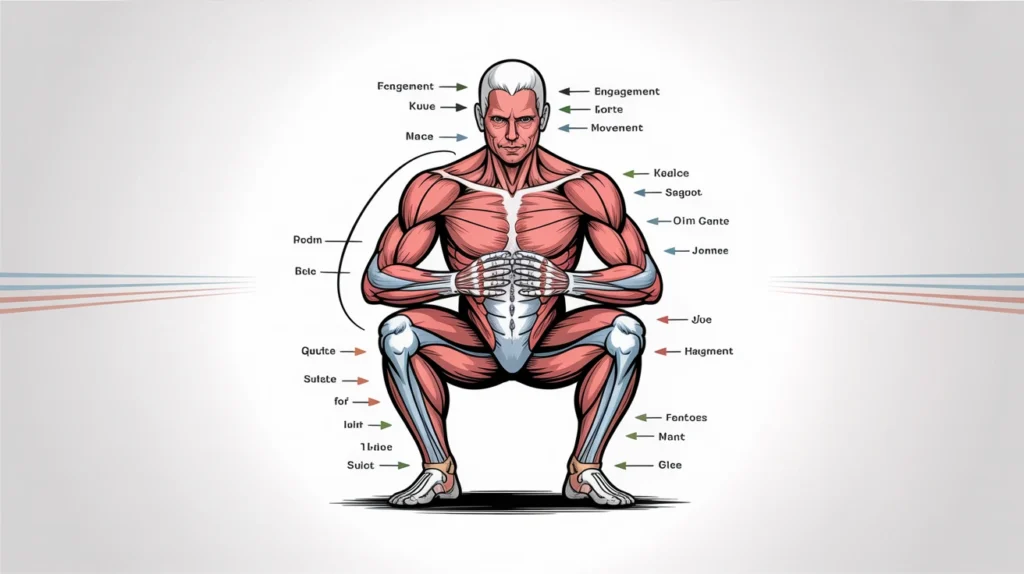
For anyone embarking on a fitness journey, understanding the fundamentals of beginner strength training is paramount. It’s not just about building bigger muscles; it’s about building a stronger, more resilient body, improving bone density, boosting metabolism, and enhancing everyday functional movement.
The core principle of strength training is progressive overload, which we discussed earlier. In practice, for a beginner, this means systematically making your workouts slightly harder over time. This could be by:
- Increasing the weight/resistance: If you’re using dumbbells or resistance bands, gradually use heavier ones. For bodyweight, use a harder variation.
- Increasing repetitions (reps): If you’ve been doing 10 reps comfortably, try for 11 or 12.
- Increasing sets: If you’re doing 2 sets, try adding a third.
- Reducing rest periods: Shorten the time you rest between sets.
- Improving form: As your technique gets better, you can lift more effectively and safely.
The key is gradual progression. Don’t jump too quickly. Focus on small, consistent improvements.
Proper form over heavy weight is the mantra for beginners. Lifting with poor form significantly increases your risk of injury and reduces the effectiveness of the exercise. It’s far better to lift a lighter weight with perfect technique than to struggle with a heavy weight and risk hurting yourself. If you’re unsure about the form for an exercise, watch reputable online tutorials (YouTube channels like “Fitness Blender,” “Bodybuilding.com,” or “ScottHermanFitness” are good starting points), or consider a session with a qualified personal trainer for foundational movements. Recording yourself and reviewing your form can also be incredibly insightful.
A well-rounded beginner strength training program will incorporate the major movement patterns:
- Squat: Mimics sitting down and standing up (e.g., bodyweight squats, goblet squats, leg press).
- Hinge: Bending at the hips, keeping the back straight (e.g., glute bridges, Romanian deadlifts).
- Push (horizontal): Pushing away from your body (e.g., push-ups, dumbbell bench press).
- Pull (horizontal): Pulling towards your body (e.g., seated cable rows, dumbbell rows).
- Push (vertical): Pushing overhead (e.g., dumbbell shoulder press, overhead press machine).
- Pull (vertical): Pulling down from overhead (e.g., lat pulldowns, assisted pull-ups).
- Core Stabilization: Exercises that brace and strengthen your trunk (e.g., planks, bird-dog).
Initially, focus on one or two exercises from each category in your full-body workouts. This ensures comprehensive development.
Finally, listen to your body. Beginners will experience muscle soreness, particularly “Delayed Onset Muscle Soreness” (DOMS), which typically peaks 24-48 hours after a workout. This is normal and a sign of adaptation. However, sharp, sudden pain, or pain in joints, is a red flag. Differentiate between muscle soreness and joint pain. If you feel joint pain, stop, rest, and reassess your form or consider a different exercise variation. Consistent rest, proper nutrition, and adequate sleep are just as vital as the workouts themselves for successful beginner strength training.
Heart Smart: Beginner Cardio Guidelines

Integrating cardiovascular exercise into your beginner workout plan is non-negotiable for overall health, energy levels, and fat loss. Often called “cardio,” this type of exercise strengthens your heart and lungs, improves circulation, and boosts your endurance, making everyday activities feel easier.
For beginners, the goal isn’t to run a marathon on day one, but to gradually build your aerobic base. Here are the key guidelines:
Frequency: Aim for 3-5 sessions of cardio per week. These can be on separate days from your strength training, or you can integrate shorter cardio bursts into your strength days as a warm-up or cool-down.
Duration: Start with manageable durations and gradually increase.
- Weeks 1-2: Begin with 15-20 minutes per session.
- Weeks 3-4: Increase to 20-25 minutes.
- Weeks 5+: Work your way up to 25-40 minutes per session.
The total weekly recommendation for adults is generally 150-300 minutes of moderate-intensity activity.
Intensity: For beginners, focus on moderate intensity. This means you should be able to hold a conversation, but you shouldn’t be able to sing. You should feel your breathing accelerate and your heart rate elevate, but you shouldn’t be completely out of breath. A simple way to gauge this is the “talk test.” If you can easily carry on a full conversation without pausing for breath, you might need to increase intensity. If you’re gasping for air, you’re likely working too hard.
Choosing Your Cardio: The “best” cardio is the one you enjoy and will do consistently. Options for your fitness journey include:
- Brisk Walking: Excellent starting point, easy on the joints. Increase pace or incline as you progress.
- Jogging/Running: Start with walk-jog intervals (e.g., 1 minute jog, 2 minutes walk).
- Cycling (stationary or outdoor): Low impact, great for endurance.
- Elliptical Trainer: Low impact, works both upper and lower body.
- Rowing Machine: Full-body workout, great for strength and endurance.
- Swimming: Very low impact, excellent for full-body conditioning.
- Dancing: A fun way to get your heart rate up without it feeling like traditional “exercise.”
- Jumping Rope: High-intensity, space-efficient, but requires some coordination.
Interval Training (Optional for later beginner stages): Once you’ve built a solid base of steady-state cardio, you can introduce short bursts of higher intensity followed by recovery periods. For example, 30 seconds of faster jogging, followed by 90 seconds of brisk walking, repeated for 15-20 minutes. This can be more time-efficient and effective for some.
Remember to warm up for 5 minutes with light cardio (like marching in place or gentle arm circles) before your main cardio session, and cool down for 5 minutes with light walking and stretching afterward. Consistent, enjoyable cardio is a powerful component of your overall health and fitness.
Unlocking Movement: Flexibility and Mobility for Beginners
Often overlooked in the initial excitement of a beginner workout plan, flexibility and mobility are vital components of a balanced fitness journey. They contribute to better posture, reduce the risk of injury, improve exercise performance, and generally enhance your ability to move comfortably in daily life.
- Flexibility refers to the length of your muscles and the range of motion around your joints. Think of a rubber band: how far can it stretch?
- Mobility is the ability of a joint to move actively through its full range of motion. It combines flexibility with strength and control. Think of using that stretched rubber band to actually do something.
For beginners, incorporating both into your routine doesn’t need to be complicated:
1. Dynamic Warm-ups (Before your workout):
These involve moving your body through a range of motion to prepare your muscles and joints for exercise, increasing blood flow and reducing stiffness. Aim for 5-10 minutes.
- Arm Circles: Large circles forward and backward.
- Leg Swings: Gentle forward/backward and side-to-side swings.
- Torso Twists: Gentle rotations of your upper body.
- Cat-Cow Stretch: On all fours, arch and round your back.
- Walking Lunges: Light lunges to warm up the lower body.
2. Static Stretching (After your workout or on rest days):
These involve holding a stretch for a period of time to lengthen muscles. Your muscles should be warm before doing these. Hold each stretch for 20-30 seconds, breathing deeply. Do not bounce. You should feel a gentle pull, not pain.
- Hamstring Stretch: Sit on the floor with one leg extended, reach for your toes.
- Quad Stretch: Stand and grab your ankle, pulling your heel towards your glutes.
- Calf Stretch: Lean against a wall, one leg back, heel on the floor.
- Chest Stretch: Stand in a doorway, place forearms on the frame, lean forward.
- Tricep Stretch: Bring one arm overhead, bend elbow, use other hand to gently pull elbow down.
- Shoulder/Upper Back Stretch: Cross one arm across your chest, use the other arm to gently pull it closer.
Frequency: Aim for 2-3 sessions of dedicated static stretching per week, or incorporate a few stretches after every workout. Dynamic warm-ups should be done before every workout.
Consistency is Key: Just like strength and cardio, consistent practice is what yields results. You won’t become super flexible overnight, but regular attention to these areas will significantly improve your overall physical well-being and protect you from common aches and pains as you progress on your beginner workout plan.
Fueling Your Journey: Nutrition Basics to Support Your Beginner Workout Plan

Exercise is only half the equation; nutrition is the other, equally critical half of your fitness journey. What you eat directly impacts your energy levels, recovery, muscle growth, and overall progress with your beginner workout plan. For beginners, the goal isn’t to follow a restrictive or complex diet, but to establish simple, sustainable habits that support your new active lifestyle.
1. Prioritize Whole, Unprocessed Foods:
Focus on foods in their most natural state. This means more:
- Fruits and Vegetables: Packed with vitamins, minerals, fiber, and antioxidants. Aim for a variety of colors.
- Lean Proteins: Essential for muscle repair and growth. Think chicken breast, turkey, fish, eggs, Greek yogurt, tofu, beans, lentils.
- Whole Grains: Provide sustained energy and fiber. Opt for oats, brown rice, quinoa, whole-wheat bread over refined grains.
- Healthy Fats: Crucial for hormone production and overall health. Avocados, nuts, seeds, olive oil are great sources.
2. Hydration is Non-Negotiable:
Water is fundamental. It regulates body temperature, transports nutrients, lubricates joints, and helps prevent fatigue.
- Goal: Aim for at least 8 glasses (about 2 liters) of water per day, and more on workout days.
- Tip: Keep a water bottle with you throughout the day. Add a slice of lemon or cucumber for flavor.
3. Understand Macronutrients (Simple Version):
- Protein: Crucial for muscle repair and growth. Include a source of lean protein with every meal.
- Carbohydrates: Your body’s primary energy source, especially important for fueling workouts. Choose complex carbs (whole grains, fruits, vegetables) for sustained energy.
- Fats: Important for overall health and satiety. Prioritize healthy unsaturated fats.
4. Meal Timing (Keep it Simple):
- Before workouts: If you’re eating a full meal, allow 2-3 hours for digestion. If you need a quick boost, a small snack (like a banana or a handful of berries) 30-60 minutes before can be helpful.
- After workouts: Aim to consume a meal or snack containing protein and carbohydrates within 1-2 hours after your workout. This helps replenish energy stores and kick-starts muscle recovery. A protein shake, Greek yogurt with fruit, or chicken and rice are good examples.
5. Listen to Your Body’s Hunger Cues:
Eat when you’re hungry, and stop when you’re satisfied, not stuffed. Avoid mindless eating and pay attention to how different foods make you feel.
6. Avoid Extreme Restrictions:
Drastic calorie cuts or eliminating entire food groups (unless for a medical reason) are usually unsustainable for beginners. Focus on making small, positive changes that you can maintain long-term. A balanced approach is key.
7. Treat Food as Fuel:
View food as the fuel your body needs to perform, recover, and grow stronger. Making conscious, healthy choices will significantly amplify the results of your hard work in your beginner workout plan.
Bumps in the Road: Common Beginner Challenges and Smart Solutions

Starting a fitness journey is exciting, but it’s rarely a perfectly smooth path. Every beginner, regardless of their starting point, encounters challenges. Recognizing these common hurdles and having strategies to overcome them is crucial for maintaining consistency and achieving long-term success with your beginner workout plan.
Challenge 1: Overwhelm and Not Knowing Where to Start.
- Solution: You’re already taking the right step by reading this guide! Stick to a simple, structured plan like the ones outlined here. Don’t try to do everything at once. Focus on 3-4 full-body workouts a week, and gradually build from there. Remember, consistency is more important than complexity.
Challenge 2: Muscle Soreness (DOMS – Delayed Onset Muscle Soreness).
- Solution: This is incredibly common and usually peaks 24-48 hours after a new or intense workout.
- Keep moving: Gentle activity like walking, light cycling, or dynamic stretching can help blood flow and ease soreness.
- Hydrate: Drink plenty of water.
- Nutrition: Ensure adequate protein intake for muscle repair.
- Rest: Get good quality sleep.
- Differentiate: Learn to distinguish between muscle soreness (a dull ache) and sharp, persistent pain (which could indicate injury – consult a professional if concerned).
Challenge 3: Lack of Motivation or Feeling Too Tired.
- Solution: This happens to everyone.
- “Ten-Minute Rule”: Commit to just 10 minutes of your workout. Often, once you start, you’ll continue.
- Schedule it: Treat your workout like an important appointment.
- Find an accountability partner: Working out with a friend or checking in with someone can boost motivation.
- Vary your routine: If boredom sets in, try a new exercise, a different cardio machine, or an online class.
- Focus on how you feel: Remind yourself of the energy and mood boost you get after a workout.
Challenge 4: Time Constraints.
- Solution: We all lead busy lives.
- Efficient Workouts: Focus on full-body compound movements (squats, push-ups, rows) as they are most efficient.
- Short Bursts: Even 15-20 minute workouts are beneficial. Something is always better than nothing.
- Tiered Plan: Implement your “A,” “B,” and “C” plans for different levels of busyness.
- Integrate: Take the stairs, walk during lunch, do bodyweight exercises during commercial breaks.
Challenge 5: Not Seeing Results Quickly Enough.
- Solution: Patience is crucial.
- Realistic Expectations: Remember the timelines for visible changes (6-8+ weeks).
- Focus on Non-Scale Victories: Are you stronger? Do your clothes fit better? Do you have more energy? Is your mood better? These are equally important metrics.
- Track Progress: Use a workout journal or app to see tangible improvements in reps, weight, or duration. This visual proof is highly motivating.
- Consistency: Consistent, steady effort over weeks and months is what truly transforms your body and health.
Challenge 6: Intimidation at the Gym.
- Solution: This is a very common feeling.
- Go During Off-Peak Hours: Less crowded gyms can feel less intimidating.
- Have a Plan: Knowing exactly what you’re doing beforehand (like using the provided gym plan) builds confidence.
- Start Simple: Begin with machines that guide movement, then slowly transition to free weights.
- Focus on Yourself: Most people at the gym are focused on their own workouts.
- Ask for Help: Don’t hesitate to ask gym staff for a quick demonstration of equipment.
By anticipating these challenges and arming yourself with proactive solutions, you’ll be much better equipped to navigate the inevitable bumps in your fitness journey and keep moving forward towards your goals.
Conclusion
Embarking on a fitness journey is one of the most rewarding decisions you can make for your overall well-being. It’s a commitment to a stronger, healthier, and more vibrant you. This comprehensive guide, your personal fitness launchpad, has aimed to demystify the process, cutting through the overwhelming noise to provide you with a clear, actionable beginner workout plan.
We’ve covered the fundamental principles of fitness, from the non-negotiable concept of progressive overload to the importance of recovery. We’ve equipped you with knowledge about smart equipment choices, whether you’re setting up a beginner home workout space or stepping into a gym for the first time gym workout. We’ve provided adaptable schedules and specific routines for both environments, ensuring you have a practical roadmap. Crucially, we’ve emphasized the building blocks of beginner strength training, outlined smart cardio guidelines, highlighted the significance of flexibility and mobility, and touched upon the foundational nutrition basics that will fuel your progress. Finally, we’ve armed you with strategies to overcome the common challenges that every beginner faces, transforming potential roadblocks into stepping stones.
Remember, the true secret to long-term success in fitness isn’t about reaching an elusive state of “perfection,” but about cultivating consistency. It’s about showing up, even when motivation wanes. It’s about making small, sustainable improvements week after week, allowing your body to adapt and grow stronger, more capable, and more resilient. Don’t let the pursuit of perfection derail your progress. Embrace the journey, celebrate the small victories, and trust the process.
Your body is an incredible machine, designed for movement and adaptation. Give it the respect and consistent effort it deserves, and it will respond in ways that will genuinely surprise and empower you. Take that first step, stick with the plan, listen to your body, and enjoy the profound benefits that a consistent beginner workout plan will bring to every aspect of your life. The path to a stronger, healthier you starts now.
